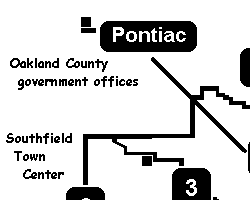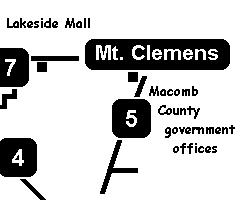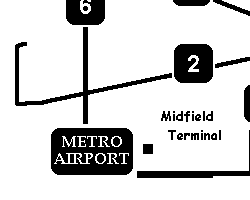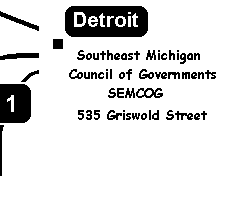 |
 |
 |
 |
|
Social Considerations Back to Data Base |
|
70,000 Bus riders. Location of Meetings all on 24/7 routes in picture below |
|
THE Plan - Regional Mass Transit for Metropolitan Detroit The first regional mass transit plan for metro Detroit using internet and computer technologies and all statistics to get 70,000 plus people to their jobs and all transit meetings , in addtion to lowering costs for existing mass transit.
|
|
These are known facts
|
These will be learned at the meetings to make plan work in the best ways possible.
|
|
People to attend meetings and included in studies.
|
Topics to be discussed at meetings and to be studied.
|
|
Common sense and planning will make these plans work A provision for seamless transfers, fares and schedules. Provisions for sharing costs to save tax dollars but retain separate identities and responsibilities keeping two transit systems within budget. Require state funds for the handicapped and low income without redistribution. Hold the state legally liable for all debts above millage with no service cuts. Full federal funding by meeting farebox/revenue ratios. Secure industry and commerce supports with a commitment to economically serve the mass transit needs of metro Detroit. Require all levels of government to provide for the needs for mass transit, including the protection of existing laws to provide mass transit it's full share of funding at the state/federal levels. Connecting very high-density areas together with shuttle buses are a proven means of making transit taxes stretch further. By using statistics and the multiplying function of combining seven routes seamlessly together, a constant demand is created. Both population and employment statistics were used extensively in designing this system. Road alignments, dimensions and traffic patterns were also used. Areas not on the 24 hour / 7 day bus routes. Given the complexity of traffic patterns and the limited funding for buses, it is necessary to rely on many transit options that are self supporting. Employee/Worker shuttle buses have proven successful in many metropolitan areas without the need for tax subsidies. The 7 backbone routes require federal/state government funds and extensive cooperative efforts between many governmental bodies but is supported at the farebox by the able-bodied. This does not imply that operating taxes are not needed but instead reinforces the concept of establishing dedicated funding. This is because of equity and distribution of services to best meet the needs of the public as a whole. |
|
An investment in Michigan's future
Costs to be shared
|